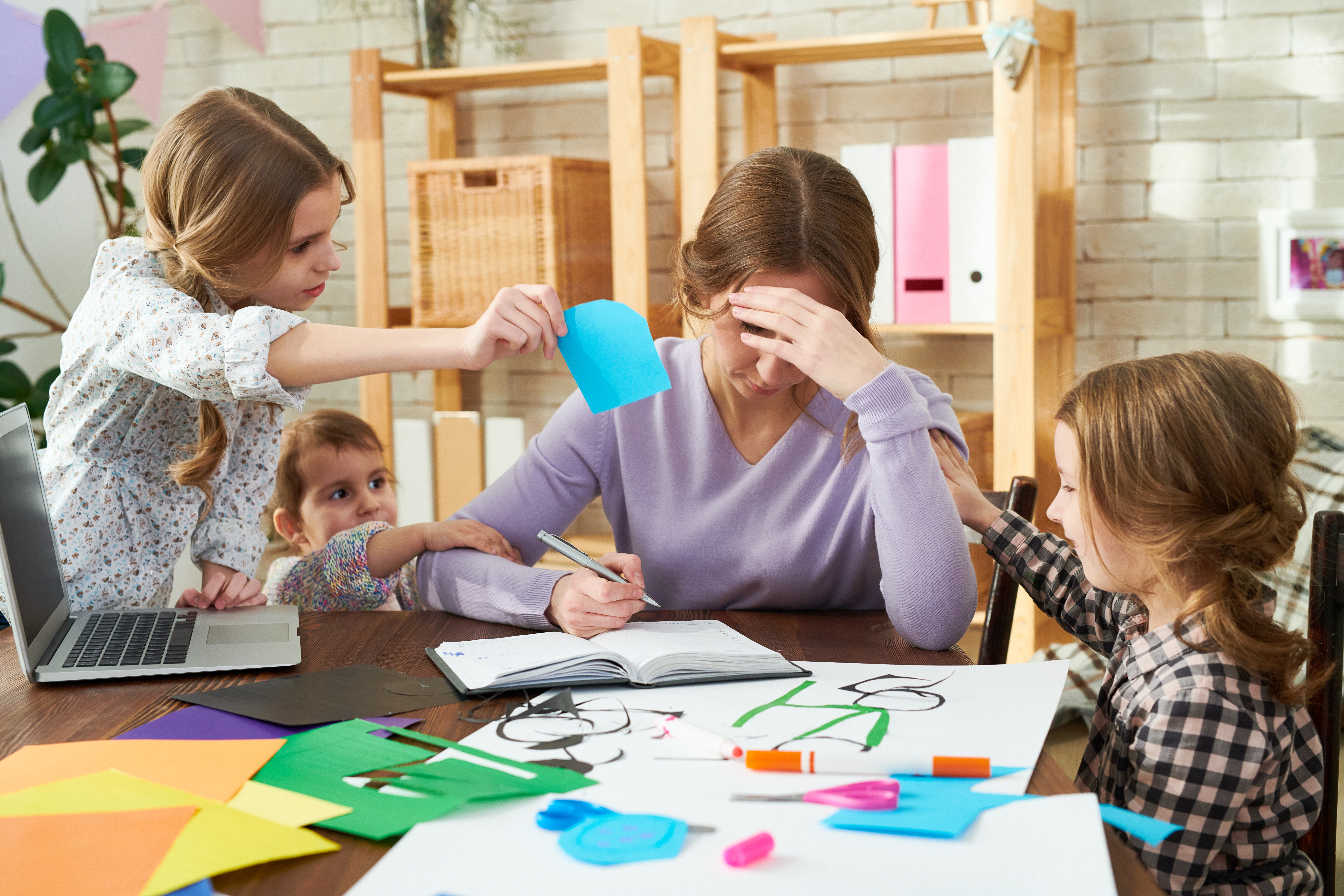As families around the nation hunker down and practice social distancing, now more than ever parents are looking for the answer to the question of how much daily screen time is okay for their children.
But they don’t need to look too far. I know what excessive screen time does to my four kids. Just 30 minutes on a video game makes my son a different person and after the same amount of time on social media my daughter is sulking in her bedroom. And I don’t need a study to tell me that practicing piano or just pulling weeds in the backyard is better for my kids than Fortnite.
Families are living in a screen experiment every day. When you turn on a screen in a room, suddenly no one is talking, wrestling on the floor, working on the family puzzle, or folding laundry. Take the screen out of the room and all those things will start to happen. After the initial meltdowns, kids get creative because that’s what kids do—they use their amazing imaginations in real life when screen obstacles are removed.
Our common sense tells us that every minute our child spends on recreational screens is a minute taken from something more productive and developmentally necessary. Is Playing Fortnite for three hours really better than reading a novel? Is creating a new dance on TikTok really better than writing a short story or inventing a new recipe? These answers are easy. What is not easy is saying no to a begging child.
What is the right amount of screen time for our kids during the quarantine? The same as it was a few months ago.
Let’s be honest, this quarantine is not miraculously making our kids more mature or able to suddenly make good screen choices. It’s also not making screens less toxic and addiction proof. Teens still can not manage their own screen time. The executive function area of their brain isn’t fully connected yet, but yours is. So make the choice to continue to be the parent and stick to your limits, especially now.
How to limit screen time when routines have disappeared.
Focus
In general, our focus should be school, life skills, and family time. Every minute spent on empty screens takes time out of one of these three critical areas. Five hours of daily gaming or social media scrolling over one month is 150 hours that could be invested in a life skill or other fun hobby.
Allow the screen hours that are necessary for distance learning.
Classroom screen activity should take priority, but keep a close eye on distractions with those. Add a little time for other non-addictive screen time like Skyping with grandparents, building a music playlist, or even doing extra homework. Then stay balanced by closing the laptop lids, and collecting the small screens (including tablets and smartphones) and go outside or dive into a non-screen activity.
Schedule daily activities and chores.
In our home, we don’t want our kids to get the idea that they are living in a hotel, so chores are done by everyone. We also work on life skills that are missing from their life resume; things like making meals, organizing, cleaning, and fixing things. Make sure to also include time for reading, exercise, being creative offline, and socializing on a video call or phone call for now.
Give them a break, but not a screen break.
If your kids start to get restless, take a small break every hour or so to spend 10 minutes regrouping with them. Refresh the snack tray, pull out the next board game, pop some popcorn for their scheduled afternoon reading session, and don’t forget a quick hug. This new routine takes structure, planning, and a happy attitude on your part.
Have a downtime strategy.
Quarantine the screens, but not your kid’s imagination. Screens work as a powerful distraction, but think of what else your brilliant kids could do. They can fill time with art, puzzles, building models, knitting, or home projects like organizing or cleaning out their closet, or detailing the car while you work. When your kids start filling their own downtime with tangible activities like reading, practicing music, throwing a ball, hanging from a tree—anything but slithering into a screen coma—your family will win the screen balance game.
Be present, have fun, and talk with your kids.
Spending time with your kids is always more important than screen time. Everyone will like each other more when you transition your screen-filled school day to a screen-free evening. Time for meaningful conversations is a must, so ditch the kids’ screens between dinner and bedtime (unless you choose a family movie to enjoy together).
The next time your teen tries to convince you that you need to be more screen-lenient during this quarantine, hold your ground with confidence. Get the support of a like-minded friend and re-read this blog post together. You are doing the right thing by keeping your screen limits tight. Trust your instincts and keep that bar high. If you do, your family will be ahead of most and will not live the nightmare of reversing bad screen habits when this is all over.


